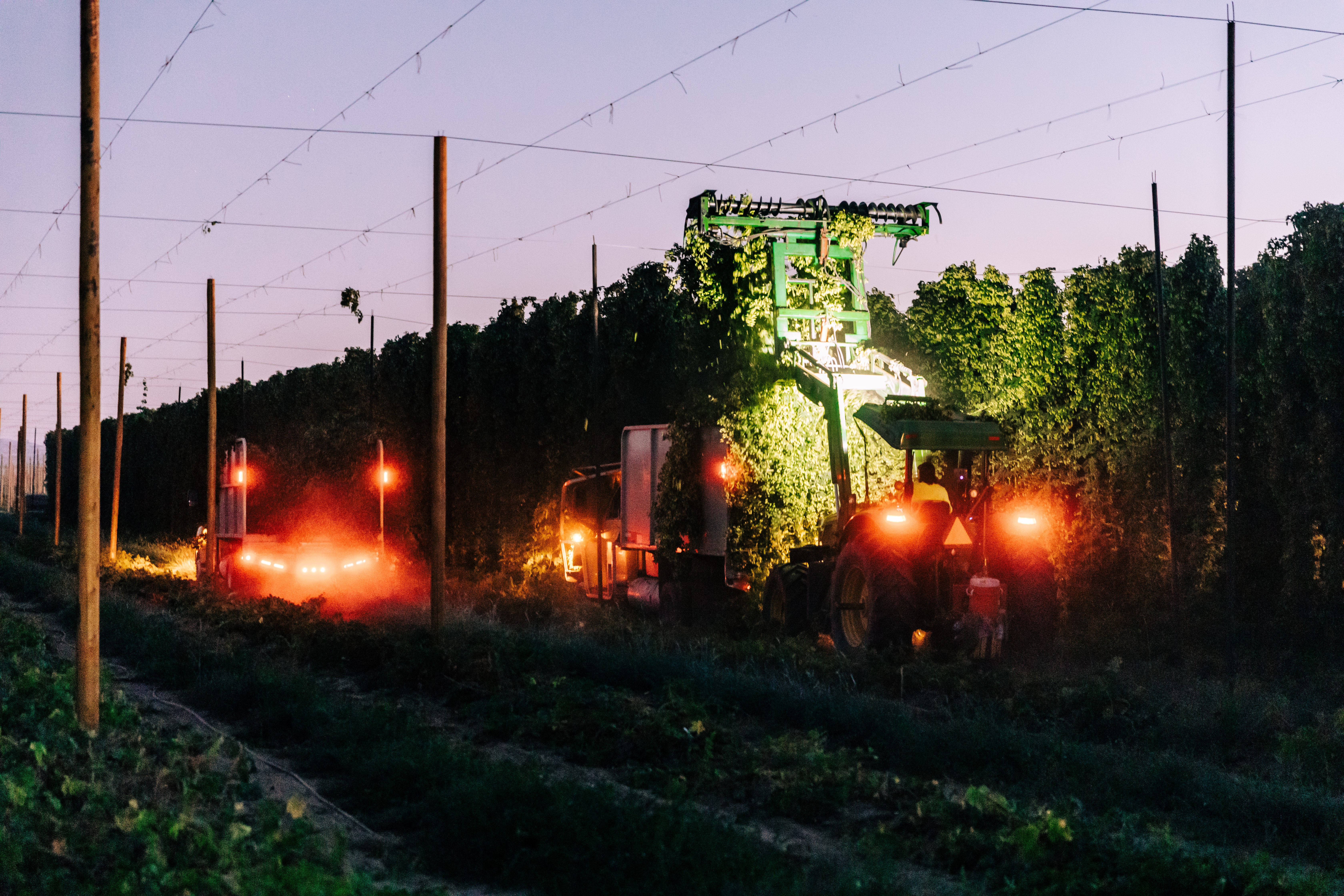Harvest
The annual hop harvest begins in late August and progresses through early October.
Each variety has its own peak maturity time and must be monitored closely. After hop cones are stripped from bines, specialized equipment removes leaves and stems which are diverted for compost. Cones are then immediately transported by conveyor belts to kilns, where warm air dries the hops for several hours to approximately 9% moisture content.
After cooling for at least 24 hours, dried hops are compressed into 200-pound bales, wrapped and sewn into bale cloth, and labeled and inspected for traceability and quality standards. Bales are quickly transported to cold storage warehouses to maintain quality until processing or shipment occurs. During all of this, brewers visit farms and merchants during the entirety of harvest to select their hops in person for the upcoming brewing year in a process called selection. Depending on the size of the brewery and the goal of the visit, some brewers may visit a site multiple times.
